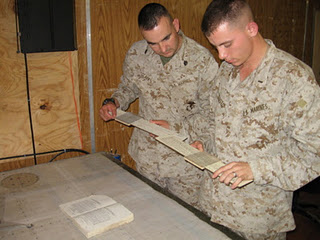Because I'm a math teacher, my services as demystifier of mathematical phenomena are sometimes requested by family and friends who find themselves sufficiently mystified by something mathematical. Recently I've had a few people send me the link to the YouTube video, "How do japanese multiply??" [sic]
Based on some of the comments (e.g., "What the [flip] is this wizardry?"), there are at least a few people in the world who might like an explanation. Here's the original video, followed by my narrated solution, plus, for the nerdily inclined, a bonus example in base 6! Can you imagine anything more fun?
Actually, if you want a much more interesting multiplication algorithm, take a look at Russian Peasant Multiplication. Now that's some [binary] wizardry.
[youtube=http://www.youtube.com/watch?v=e-P5RGdjICo]
...and the response...
[youtube=http://www.youtube.com/watch?v=85Vd0NpL32k&context=C3a288dcADOEgsToPDskJDE7sA83vY-q75bAdFKWfZ]
